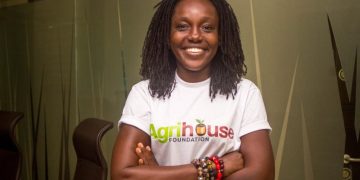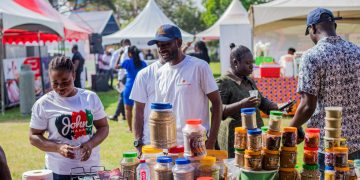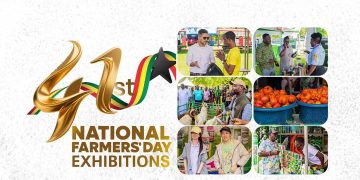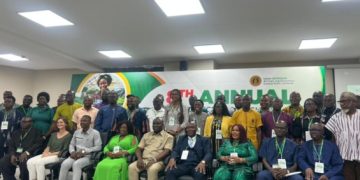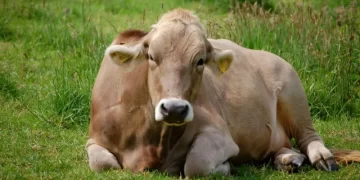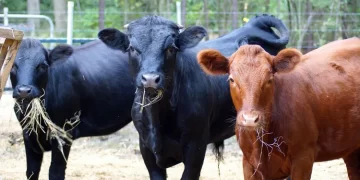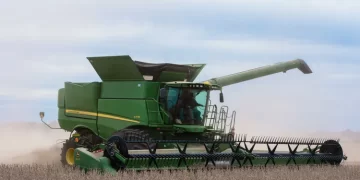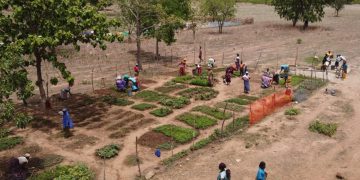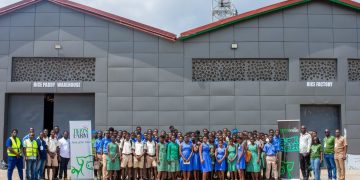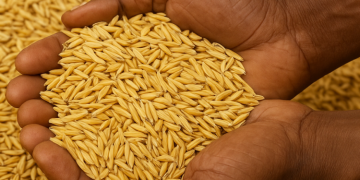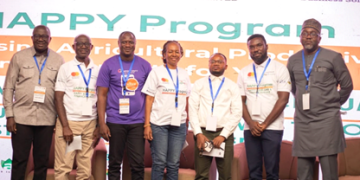In the first part of this publication last week, we unpacked the remarkable progress being made by the Food and Agriculture Organization (FAO) in championing youth inclusion in global agrifood systems
In this second and final publication, we go deeper moving from vision to strategy, from policy discourse to real-life implementation. Drawing directly from the FAO’s Status of Youth in Agrifood Systems report, we look at how the global community can translate commitment into concrete actions that break barriers, empower youth, and unlock the full potential of the largest youth in Agrifood systems population in history.
Expanding Youth Access to Resources
One of the most fundamental barriers to youth participation in agrifood systems is access to resources such as land, finance, technology, inputs, and markets. Rural youth, in particular, face structural and social constraints that marginalize them in the very sectors they are expected to rejuvenate. In many cases, young people are cut off from resources due to outdated inheritance systems, skewed land markets, and lack of credit history or collateral.
FAO’s analysis makes it clear that resource access must be tackled through integrated approaches. It is not enough to provide training or loans in isolation. Where interventions have succeeded, they’ve combined capacity building with real tools like agricultural inputs, financial products, and follow-up support.
One powerful example comes from India, where rural NEET youth were trained in sustainable agricultural practices and then provided with poultry chicks and feed to start agribusinesses. This led not only to new enterprises but reduced migration and boosted local resilience.
But these successes must be scaled carefully. In Mozambique, a project meant to expand access to certified seeds inadvertently triggered land grabs, worsening inequality between youth, women, and household heads. In Uganda, an input subsidy programme overwhelmed local supply chains. Such cases underscore a crucial truth: expanding youth access must be done with intentional design and a clear understanding of local market dynamics, land tenure systems, and gender norms.
Promoting Inclusive Policies that Address Resource Gaps
No matter how impactful a programme is, its reach remains limited without supportive national policies. Redistributive reforms and inclusive governance are essential to ensure that access to resources is not left to chance or privilege.
Encouragingly, FAO’s assessment of 82 countries reveals that 71% have integrated youth into their agricultural strategies not just in vision statements but in objectives, activities, and performance indicators. Countries like Tanzania and Ethiopia have taken bold steps to address land access through land titling and youth-sensitive tenure reforms. In Burkina Faso, Egypt, and Mexico, land reclamation and allocation schemes have brought abandoned or underutilized lands into productive use by youth.
But policy inclusion must also address the deeper, often invisible dynamics that keep young people especially young women on the margins. Gendered succession laws, lack of legal literacy, and social pressure continue to exclude women from land markets and public programmes. Furthermore, youth without inherited land face difficult entry points, even in rental markets, where informal arrangements offer little security and investment incentive.
To truly empower youth, governments must implement not only youth-friendly but youth-responsive policies. These include land reforms that guarantee security for all, financial instruments adapted to youth realities, and education around rights to resources. Without these, even the most well-meaning policies risk remaining paper promises.
Leveraging Collective Action to Expand Resource Access
In a world where individual access is often out of reach, collective action becomes a lifeline. Youth cooperatives and networks offer an alternative route to empowerment. They enable young people to pool resources, access markets, secure inputs, and share risk. More importantly, they build solidarity and voice two things youth often lack in policy and market spaces.
Well-functioning cooperatives provide critical services such as emergency savings, credit schemes, group insurance, and digital tool access. When paired with strong leadership training and governance capacity, these organizations become powerful engines for both economic advancement and civic engagement.
However, cooperatives do not emerge in a vacuum. They require ecosystem support funding, mentorship, policy recognition, and digital tools. Public-private partnerships can catalyze this growth, especially when integrated with digital agriculture platforms that streamline access to services and knowledge. The more youth are enabled to lead and co-create these structures, the more resilient and equitable our agrifood systems will become.
Harnessing Digital Technologies to Accelerate Progress
Digital innovation is redefining agriculture, and youth are leading this revolution. Across Africa and beyond, digital agriculture platforms are unlocking new value chains, increasing transparency, reducing inefficiencies, and, most importantly, creating jobs that align with young people’s skills and aspirations.
Platforms like FarmCrowdy in Nigeria and Thrive Agric are enabling young people to raise capital through crowdfunding, secure digital insurance, and manage farm operations using real-time data. In parallel, blockchain-powered platforms like Agrikore are connecting farmers, processors, and traders through secure and transparent e-commerce ecosystems.
Mobile phones remain the gateway for much of this innovation. In Sub-Saharan Africa, more than half of all Digitalization for Agriculture (D4Ag) platforms bundle financial and advisory services, turning mobile apps into one-stop shops for young farmers.
But digital inclusion is not just about tools it’s about empowerment. Youth-led fintech startups are tailoring solutions to meet the realities of rural life: loans aligned with harvest cycles, weather-indexed insurance, and AI-driven market predictions. These innovations are shifting perceptions and showing the world that farming, when digitally enabled, is not a job of last resort but a career of opportunity.
The Way Forward Towards Youth-Inclusive Agrifood Systems
Achieving youth-inclusive agrifood systems requires bold, deliberate action across three core pillars: inquire more, include more, and invest more.
To inquire more is to acknowledge that we do not yet fully understand the complexity of youth realities in agrifood systems. Data is scarce or outdated, particularly on vulnerable groups such as Indigenous youth, young migrants, or persons with disabilities. Many surveys focus on household heads, ignoring the lived experiences of the young. Without detailed, disaggregated, and longitudinal data, we risk designing policies in the dark.
To include more means integrating youth not just in consultation, but in co-decision-making. It means moving from tokenism to real power-sharing. Policies must be developed with youth, not just for them. Young people are experts in their own lives and must be positioned as such in national agricultural strategies, investment plans, and governance bodies.
To invest more is to put real resources behind our commitments. This includes not only expanding access to land, capital, and markets but also investing in human development education, nutrition, and health. Youth are at a life stage where these investments have exponential returns. They are the foundation for a resilient, productive, and inclusive agrifood future.
Conclusion: The Future Is Already Here
Youth inclusion is no longer a choice it is a necessity. With 1.3 billion young people globally, and a rapidly growing youth population in Sub-Saharan Africa, the decisions we make today will determine not only the future of food systems but the future of global prosperity.
According to FAO, integrating unemployed and NEET youth aged 20–24 into the workforce could raise global GDP by USD 1.5 trillion, with agrifood systems alone contributing USD 680 billion. These figures are not hypothetical they are entirely achievable if we act decisively.
The FAO’s Status of Youth in Agrifood Systems report provides us with the blueprint. The question is: do we have the courage, coordination, and commitment to follow it?
Youth are not just beneficiaries they are innovators, entrepreneurs, farmers, policymakers, and change-makers. They are already shaping the food systems of today. It is time the world recognized their power and placed them at the centre of every strategy, investment, and policy aimed at feeding the future.

